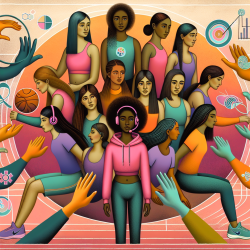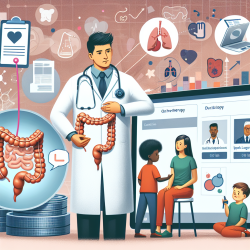Introduction
Adolescence is a critical period for developing lifelong habits and self-perceptions. For at-risk adolescent girls, negative self-perceptions can significantly hinder physical activity (PA) participation, leading to various health issues. The research article "Exploring the Effectiveness of an Integrated Physical Activity and Psychosocial Program Targeting At-Risk Adolescent Girls: Protocol for the Girls United and on the Move (GUM) Intervention Study" presents a promising approach to addressing these challenges.
The GUM Intervention: A Holistic Approach
The GUM intervention integrates PA with psychosocial support to improve self-compassion, social connectedness, and overall self-perceptions among at-risk adolescent girls. Conducted in five schools in British Columbia, Canada, this 9-week program involved 101 participants aged 11 to 15 years. The intervention was co-delivered by a PA/health promotion–trained researcher and a registered social worker, focusing on evidence-based topics relevant to the participants.
Key Outcomes and Measurements
The GUM intervention evaluated several outcomes:
- Physical Activity: Assessed using the Physical Activity Questionnaire for Children.
- Self-Compassion: Measured through the Self-Compassion Scale (SCS).
- Social Support: Evaluated using the Child and Adolescent Social Support Scale (CASSS).
- Perceived Leader Supportiveness: Assessed with the Learning Climate Questionnaire (LCQ).
- Sport Commitment and Enjoyment: Measured using the Sport Commitment Model.
Program acceptability and satisfaction were also examined through semistructured interviews with a subsample of participants.
Implications for Practitioners
The GUM intervention highlights the importance of a supportive environment in enhancing physical and mental health outcomes for at-risk adolescent girls. Practitioners can draw from this study to:
- Incorporate integrated PA and psychosocial components in interventions targeting at-risk youth.
- Focus on building self-compassion and social support to foster positive self-perceptions.
- Utilize mixed methods to evaluate program effectiveness and participant satisfaction.
By understanding the GUM intervention's framework, practitioners can better tailor their approaches to meet the unique needs of at-risk populations.
Encouraging Further Research
The GUM study provides a foundation for future research into integrated interventions for at-risk adolescents. Researchers are encouraged to explore:
- Long-term effects of integrated PA and psychosocial programs on adolescent health outcomes.
- Adaptations of the GUM model for different demographics and settings.
- The role of technology in enhancing program delivery and engagement.
To read the original research paper, please follow this link: Exploring the Effectiveness of an Integrated Physical Activity and Psychosocial Program Targeting At-Risk Adolescent Girls: Protocol for the Girls United and on the Move (GUM) Intervention Study.










